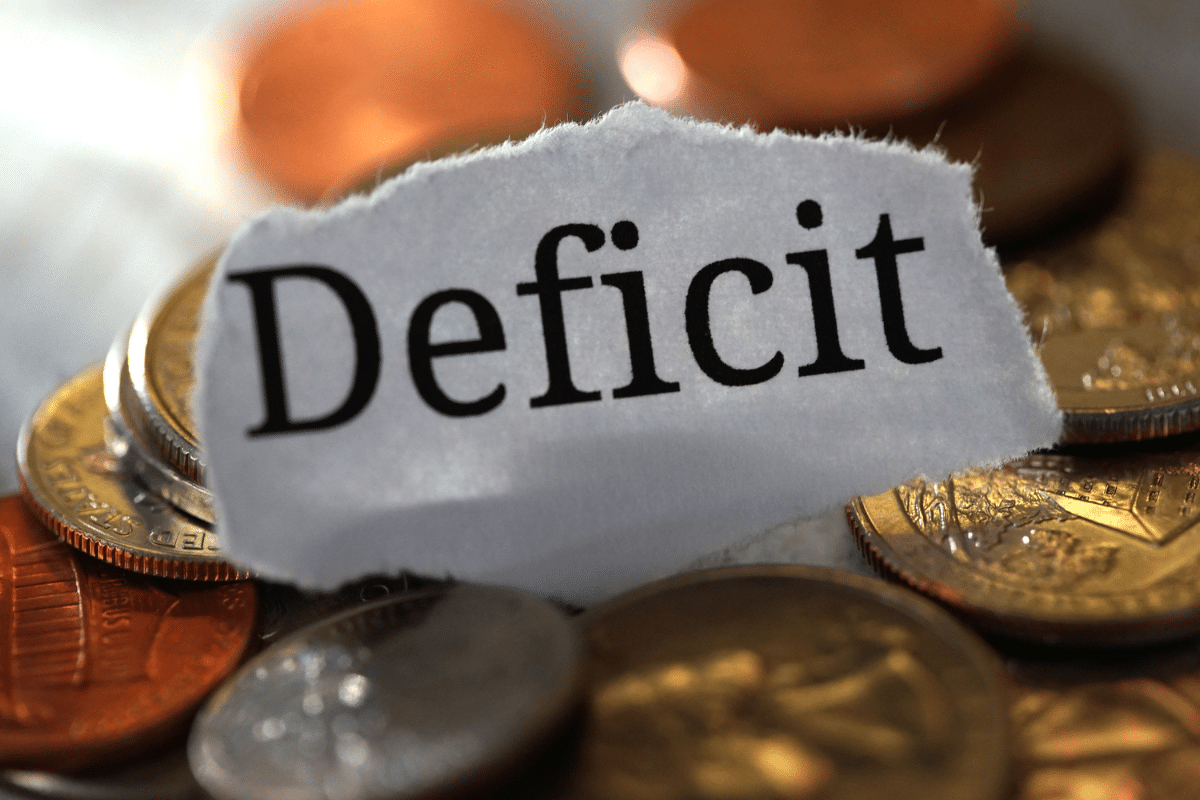Despite an uncertain financial environment and a dense and complex legislation, the life insurance remains in 2017 the first financial investment for French. Indeed, this one still represent an excellent technique of current income optimization, and a great means of future income incorporation, gathering liquidities and relative safety.
1- Despite the doubts raised by the Sapin 2 law which grants to the Financial Stability Board the possibility to adopt, under certain conditions, with respect to all or part of the insurers and reinsurers, some interim measures, such as repurchase limitation, advance, or arbitrations (C. mon. fin., art. L. 631-2-1, 5° ter), the life-insurance remains at this day the long-term investment support for French financial assets.
2- This finding is no surprise in itself: the current state of law and fiscal environment of this investment offer to the subscriber a placement of incomparable usefulness.
Indeed, the allocation of part of the incomes or part of the product of patrimonial rearrangement on a single or multiple life-insurance contracts will allow the investor to build an actual or future flow of income, in a very interesting fiscal framework.
3- Life-insurance hold numerous perks that made it a remarkable investment, and a quite unique one.
4- First of all, with the ability of repurchase, or with the mechanism of advance, life-insurance is an investment relatively liquid. Thus, the investor can adapt his resources to his needs, with capitalization as boundary.
There is an essential advantage over real estate physical ownership. In particular, life-insurance allow efficient response to challenges raised by life span elongation and its relative, the increase in time of dependency risk. This issue is more than ever actual, since baby boomers are currently more than 70 years old.
Thanks to repurchase, the subscriber can benefit immediately of the amount of resources he needs, without being limited by the result of his investment. Thus, he can cope with any rapid increase of expenses, due to a brutal degradation of his health.
5- Also, the fiscal regime of repurchase or life security is extremely favorable, particularly when compared to financial placement. With a limited mandatory levy rate, after 8 years, at 23%, life-insurance is fiscally a most interesting investment, especially for heavy taxed household.
More interesting also is the fact that capitalized products are not submit to taxation as long as they are not repurchased. In a situation of damaged public account, which means of patrimonial tax increase, the reorientation of patrimonial revenues into life-insurance (or capitalization contract) become in consequence an income tax-efficiency strategy. This strategy is simple and efficient, especially for the management of surplus incomes, which means incomes that are not necessary to the payment of charges and daily life needs. Because in order to neutralize these incomes, it is necessary to favor capitalization investment, as life-insurance, capitalization contract, or PEA, to the detriment of investment that imply income distribution.
This strategy appears even more interesting when considered that life-insurance placement, especially for funds in euro currency, can also be part of a wealth-tax reduction strategy, with the capping mechanism.
6- Finally, life-insurance allow to gather incomes and optimize in the meantime civilly and fiscally, the transmission of assets that the subscriber would not have consumed, without the need to resort, during his lifetime, to ownership dismemberment. No doubt, to consider only the fiscal angle, the transmission to his descendants of the bare ownership of a financial asset or real estate in dismemberment, especially housed in a civil society, can be a less expensive operation than the allocation to his children from the death benefit after settlement of the contract. However, for the reasons set out above, it is patrimonially very important, when age increases and over time the risks of new spending, to maintain freehold assets in assets to increase if needed liquidity immediately available beyond investment returns. Now, the characteristic of the usufruct is that its value decreases with time. In the case of a need for the assets in full ownership, the fraction of the price that the usufructuary can receive decreases as his age advances, and thus correlatively the income that he could derive from the placement of the price. It is therefore preferable to delay as far as possible transfers at death.
7- Of course, investment in life insurance is a transaction with limits, some of which are cyclical. Thus, we see an exceptional period in which the selection of the euro fund, which still accounts for 80% of outstanding life insurance, offered the investor both the guarantee of an interest rate substantially higher than inflation (And therefore the possibility of recovering at any time the totality of the invested capital, plus interest) and the liquidity of the investment, through the right of repurchase. Today, and probably for a long time, the average yield of the euro fund is low or even zero, especially if it is considered net of inflation. And this decline in yield is probably not complete, especially as inflation risks increase.
Optimizing current income by life insurance.
The simplest way to increase the net cash available to the investor is to reduce the taxation resulting from the holding of assets.
The sale of a heavily taxed asset and the reclaiming of the sale price on a life insurance contract can achieve such a result because of its tax regime (A).
However, the optimal transaction must consider the risk of taxable capital gain and the other objectives of the transferor, in particular its transmission strategy (B).
A – Life insurance fiscal regime.
12 – The tax regime for the taxation of the proceeds of life insurance contracts is essentially based on an incentive for long-term savings based on the degree of taxation depending on the duration of the contract.
It follows that:
– The absence of taxation of products during the formation phase of savings.
– The option for the subscriber to choose a withholding tax at the time of the availability of savings, rather than subjecting the income to the progressive scale.
– The degressivity of the rate of the flat-rate withholding tax according to the duration of the contract
The profit after 8 years of a reduction of a variable amount according to the family situation of the subscriber (4600 € or 9200 €).
The main tax benefit to which the proceeds of a capitalization or life insurance contract accrue is the definition of the tax term of the contract. Since the amending finance law for 1989, this is assessed in relation to the date of the first installment payment on the life insurance contract and not in relation to the amount of the premium paid.
This principle is applicable to all contracts concluded from 1 January 1990.
13 – This definition of tax time favors deal strategies based firstly on the purchase of one or more contracts for the sole purpose of taking a date, then on the payment of a significant premium a few years later, resulting for example from a patrimonial arbitration, and finally a series of partial repurchases benefiting from a reduced rate.
A traditional strategy is to sell an asset of average profitability, lower in any case after tax, to the cash available to the subscriber setting up a policy of partial repurchase.
Example
For example, X, 65, owns a building of 500,000 €. Its gross income from land amounts to 18,500 €. The deductible expenses are 3,000 €. It is taxed in the marginal bracket of 41%. That is a tax of 6 355 €. Amount of social security contributions: 2,402 €. Income after taxes and charges is thus 6,743 €.
The comparison with the life insurance is without appeal (comparison with yield to 3%).
The taxable base = amount of the partial repurchase – [total premiums paid on the date of the partial repurchase X (amount of the partial repurchase / total repurchase value at the date of the partial repurchase)]: Thus 15,000 € – [500,000 € X (15,000 € / 515,000 €)] = 437 €.
Income tax: if the proceeds of the sale have been reinvested on a contract for more than 8 years, the deduction will be 32.77 € (437 € X 7.5%), but the subscriber will receive a tax credit equal to the corresponding percentage of the amount of these products, retained within the limit equal to the difference between the amount of the abatement (€ 4,600 or € 9,200, as the case may be) and the total amount of these products allowing this abatement to be declared to income tax with progressive scale.
Social levy: 437 X 15.5% = 61.73 €
Available income: 14,932.27 €
14 – The higher the marginal tax rate, the more the taxpayer has an interest in opting for the PFL. However, in choosing the option, the underwriter must consider several parameters.
First, the social contributions paid on the investment interest of the assets are deductible at 5.1% on the total income of the tax household in the year of collection of social security contributions. This deduction is not possible in the case of an option for the PFL.
In the case of a total premium exceeding the average of the net income from which the taxpayer has been subject to income tax for the past 3 years, the taxpayer who opts for optimization on the scale may Benefit from the quotient regime of Article 163-0 A General Tax Code. This is an exceptional income which, by its nature, is not likely to be collected annually. Moreover, there is no reason to treat, in this respect, the capital received when the life insurance contract was terminated differently from pension benefits paid in the form of capital. However, it must be borne in mind that only the fraction of products which are taxable in the redemption must be taken into account for the assessment of its exceptional nature and for its taxation.
Can the partial repurchase benefit from the same favor? In fact, the question can only arise for very large repurchase, which therefore constitute an exceptional income. For these repurchases, the quotient mechanism could apply.
B. – Replacement of Life Insurance Funds
15 – Restructuring the wealth to life insurance or the capitalization contract can therefore be an income strategy. This operation can take many different forms. For example, an investor may wish to sell an asset and reinvest the proceeds in one of these contracts in order to increase the liquidity of his assets and optimize the taxation of income. On the contrary, it may wish to retain the asset but to neutralize the taxation, for example in the context of an OBO strategy (sell to himself : Owner Buy Out), with the proceeds being transferred in part on a life insurance policy for partial repurchase and for another on the loan guarantee support.
Depending on the strategy chosen, the size of the life insurance or the capitalization contract will vary.
In any case, to be fully effective, the transaction must neutralize the capital gain on sale, if this is important, and satisfy the other objectives of the investor, such as transmission, for example.
16 – Given the narrow framework of this chronicle, we will only consider the simplest strategy that takes the following form: asset sale (real estate for example) and replaces the proceeds of sale on a life insurance contract or capitalization with scheduled repurchases in order to benefit from the tax advantages of Article 125-0 A of the French General Tax Code.
17 – Example. For example, X, 65, two children, 40 and 38, each with two descendants, wants to sell a 1 million-euro building held for 13 years, with a capital gain of 600,000 €.
If X sells, then places the funds in a life insurance contract the total cost of the transaction is as follows:
18 – Cost of the sell. – For transfers made since 1 September 2014 and regardless of the nature of the assets, the rate and the rate of the deduction for a different holding period for the determination of the tax base of capital gains on property tax on income and social contributions. In this case, the taxable capital gain would be 312,000 € (600,000 X 52%). It results in the following charges:
– Income Tax = 312,000 X 19%, thus 59,280 € ;
– Taxable Capital Gain (CG, 312,000 €) being superior to 50,000 €, the high capital gains tax applies. The amount of the surplus value being greater than 260,000 €, the tax is 6% of the capital gain, ie 18,720 €;
– Social security contributions amounted to 80,724 € (520,800 € [ie 600,000 € X 86.8%] X 15.5%).
The total cost of the sale, excluding legal fees, would therefore be 59,280 € + 18,720 € + 80,724 € = 158,724 €
19 – Cost of transmission. – If the transferor wishes to transfer the proceeds of the sale to a life insurance or an accumulation contract while still following a strategy of transmission to the children, the choice of capitalization contract seems to be necessary:
A) Placement of the sale price in life insurance with yield repurchases and beneficiary clauses designating the children in equal shares. Suppose that the value of the guarantee is € 840,000 at the death of the insured. Due to the insured’s age at the time of the premium payment, the provisions of article 990 I of the General Tax Code apply
Plate of levy per child: 420,000 €
Abatement per child: 152,500 €.
Levy due: € 267,500 X 20% = € 53,500. That is € 106,000.
B) Contribution of the price (€ 840,000) to a civil society that subscribes to a capitalization agreement and donation-sharing of the bare ownership of the shares for the benefit of the children. Given the age of X, the bare ownership of the shares is worth 60% of their market value. X therefore gives per child: 840,000 / 2 X 60% or 252,000 €. Taxable assets after direct deduction: € 152,000. Cost of the donation of X: 152,000 X 20% – 1,806 = 28,594 € per child i.e. 57,188 €.
The total cost of the transfer + donation transaction is € 215,912.
20 – Several strategies can be put in place to reduce this cost. The most radical one is a donation of the full ownership of the building before the transfer. The operation could be envisaged in the following way: donation of the full ownership to its children, transfer of the property, advance of the price of sale by children in current account to a civil society with weak capital constituted by X and its children (by Donation of the bare ownership of the shares to these). Finally, subscription by civil society of a capitalization contract.
Tax cost of the operation: each donor child is taxed on the following basis: 500,000 € – 100,000 € = 400,000 €. Either a cost per child of € 400,000 X 20% – € 1,806 = € 78,194. That is a total cost of 156,388 € (excluding legal fees).
21 – The operation may also be carried out in the following way: donation to the children of the bare ownership of the building with a charge to sell at the request of the disposer who reserves the usufruct.
Cost of the donation: gross taxable base 60% of the market value of the property, or 600,000 €.
Net taxable amount per child: 600,000 € / 2 – 100,000 € = 200,000 €.
Rights due per child = 200,000 € X 20% – 1,806 € or 38,194 €
Total cost of € 76,388 (excluding legal fees)
22 – Cost of transfer of usufruct. – By hypothesis, the cession is concomitant with the donation. According to article 669 of the General Tax Code, X usufructuary, aged 65, usufruct is worth 40% of the total ownership, which leads to taxing 40% of the total capital gain (312,000 € X 40% = 124.800 €). The cost of the transfer, excluding transaction costs, will be:
– income tax: 124,800 X 19% = € 23,712;
– the taxable capital gain exceeding € 50,000, the tax on high capital gains applies. The amount of the capital gain being between 110,001 € and 150,000 €, the tax is 3% of the capital gain i.e. 3,720 €.
– Social contributions: € 520,800 X 40% X 15,5% or € 32,290.
The sale therefore has a cost of € 59,722 in respect of its capital gain on usufruct.
Total cost of the operation: 76,388 € + 59,722 € = 136,110 €.
23 – In principle, pursuant to Article 621 of the Civil Code: “In the event of the simultaneous sale of the usufruct and the bare ownership of a property, the price is divided between the usufruct and the bare ownership according to the value of each of these rights, unless the parties agree to redirect the usufruct on the price “. The replenishment of the price is indispensable to the satisfaction of the objectives. There are several possibilities. The simplest and most effective regarding the objectives is to stipulate a report of usufruct on the price with re-use of it in the subscription of shares of a civil society, which subscribes a contract of capitalization.
24 – Undoubtedly, in order to confer maximum rights on X, a quasi-usufruct agreement could be signed before the sale, with the sale price being invested by him on a capitalization contract. It would even be possible to envisage a subsequent arrangement which in this case would considerably reduce the tax cost of transferring X’s other assets to his children and optimize the transmission to the grandchildren. As a result of the assignment, X subscribes to two life insurance contracts, each for the benefit of a usufructuary child and two children designated as bare owners in equal shares.
Assume a death in 15 years.
Value of each contract at death: 420,000 €
Tax Costs:
* For the usufructuary (age at death of the insured respectively 54 and 55):
Basis of the levy: 420,000 € X 50%. That is € 105,000
Abatement: 152,500 €
Amount subject to the levy: 57,500 €.
Levy: 11,500 €
* For each bare-owner :
Basis of the levy: 420,000 € / 2 X 50% thus 105,000 €
Abatement: 152,500 € / 2 (General Tax Code art. 990 I) = 76,250 €
Amount subject to the levy: 28,750 €.
Levy: 5,750 €
Total cost: 23,000 €
25 – This strategy is all the more advisable given that the Conseil d’Etat has ruled on the exclusion of abuse of rights when the quasi-usufruct agreement is signed at the same time as the donation. By choosing to donate the bare ownership and transferring the sale price on the shares of a civil society to the CG, the investor has both changed the taxation of his income and anticipated the transfer.
2. The construction of future income by life insurance
Except for a major catastrophe, a man aged 60 has an average of 22.7 years of life expectancy, compared with 27.3 years for a woman.
As a result, in a long-term income-building policy, there is need to take into account the lifetime, after the liquidation of his pension rights and above all the foreseeable duration of the life expectancy in good health, or more precisely the life span in poor health.
In this context, it is essential for the investor to manage the contract over the long term (A) and to anticipate the method of exit from the contract (B).
A – Contract management on long-term
27 – For the reasons set out in the preamble, strategies for building future income based on life insurance can only be based on contracts where a part of the rights is more or less important (depending on different criteria). Expressed in units of account. Only multi-unit contracts offer the subscriber the possibility of controlling the management of the contract over the long term, mainly through arbitration. This makes it possible to adapt asset allocation to market developments and to the needs of the investor.
Regarding arbitration, particular attention should be paid, not only to the quality of the eligible funds, but also to other elements of the contract, such as arbitration costs, which can be negotiated, or the conditions for the exercise of arbitration, since these are not organized by the Insurance Code.
28 – If the eligible funds provided for in the contract are not sufficiently diversified to allow such adjustment, the subscriber may amend the contract. The latter may retain the fiscal precedence of the contract if the conditions of the transformation are respected.
For the record, does not entail the tax consequences of a denouement transformation:
– a life insurance contract or a capitalization bond or contract in euros in a bond or contract in which a share or the whole of the premiums paid is allocated to the acquisition of rights expressed in units of account;
– A life insurance contract or a capitalization bond or contract in euros or for which a part or all the premiums paid are allocated to the acquisition of rights expressed in units of account into a bond or contract of which a portion or all of the premiums paid are allocated to the acquisition of rights giving rise to the creation of a diversification reserve.
– A diversified life insurance policy to a Euro-growth contract
B – Contract bail out
29 – Under the contracts, the guarantee can be issued in capital, but also in securities or annuities.
Exit in securities is possible for insurance with all or part of the rights expressed in units of account. According to Article L. 131-1 of the Insurance Code, in the case of life insurance or capitalization transactions, the guaranteed capital or annuity may be expressed in units of account consisting of transferable securities or assets, granting sufficient protection for the savings invested and listed by the Conseil d’Etat. The Contractor or the beneficiary shall obtain the settlement in cash. However, a securities issue is possible, but only for shares and securities which do not confer any voting rights.
Such an exit is however not advised, the option being irrevocable.
30 – In the strategy for constructing future income, the choice of contracts offering a retirement (Perp, Madelin, Perco) may be an opportunity, particularly when the investor has not, during the formation phase, invested all the premiums from its net savings capacity, either because a third party (the company) abounds in the contract, or because it benefits from a tax saving resulting from the payment of the premiums. But even in these schemes, the exit in rent is exceptional because of the weakness of this rent for the member.
For life insurance contracts per se, which do not offer this type of benefit at the time of incorporation, the annuity issue is not attractive from a financial point of view unless the subscriber bets on A long life and that the conditions for the revaluation of the rent are attractive.
In the inverse hypotheses, exit in annuity presents major disadvantages compared to a strategy of partial repurchases.
In addition, the annuities paid by the insurer under a life insurance policy are taxed according to the rules of article 158.6 of the General Tax Code.
However, according to this text, if during the life annuity phase for consideration, the products are exempt from all taxes, irrespective of the lifetime of the contract and the amount of these products (General Tax Code, art 125-OA), on leaving a part of the pension is included in the taxable income according to a scale established by the 1963 Finance Law:
– 70% if the annuitant is less than 50 years of age;
– 50% if it is between the ages of 50 and 59 inclusive;
– 40% if aged between 60 and 69 inclusive;
– And 30% if he is more than 69 years old.
The absence of any change in this scale compared to the rules determining the tax base in the event of repurchase, obviously leads to a strategy based on partial repurchases up to 70 years and then an exit with pension.
Finally, the contract must offer the possibility of an option with guaranteed annuities, so as not to reduce the amount of the pension and allow the beneficiaries to pay the beneficiaries on the death of the remaining guaranteed annuities.
31 – In an income-generating strategy, individual life insurance, considered in addition to specific retirement schemes, still remains an essential investment today. Undoubtedly, this choice has become more complicated than before, due to the irreversible decline of euro funds, the difficulty of choosing a contract, the allocation of assets is understandable for the investor and the financial risks resulting from a market Financial system exposed to a risk of systemic crisis. Yet despite this, this placement still presents incomparable advantages, which make it an indispensable element of the heritage strategy.
fichier à telecharger:
 170606 – Income strategy based on life-insurance
170606 – Income strategy based on life-insurance










